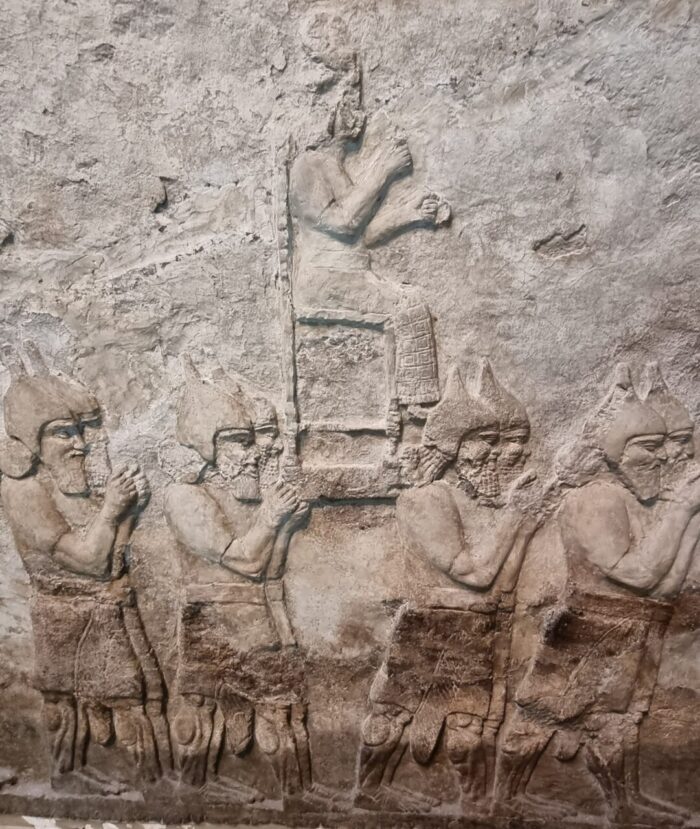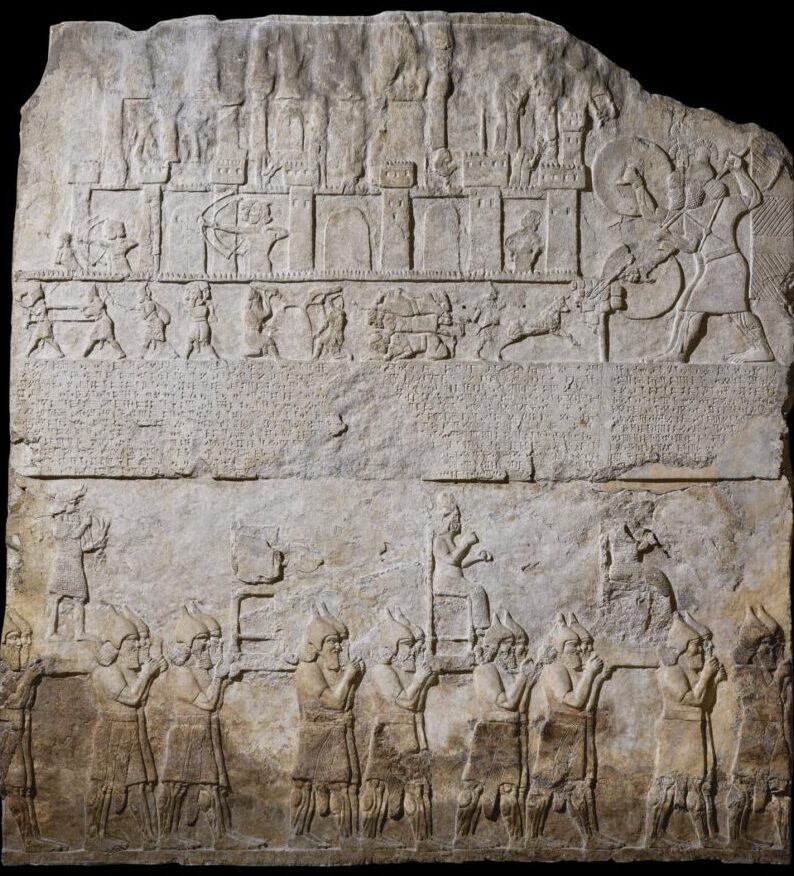Warfare in Mesopotamia has been captured in Assyrian wall friezes, which detail some of the more unpleasant aspects. Along with defenders atop walls and siege engines there are prisoners led away and heads held as trophies. The wealth of detail can provide interesting asides such as that in the frieze below.
It’s associated with Tiglath-Pileser III, a Neo-Assyrian king and is dated to the later 8th century BC. Upon initial inspection nothing seems unusual, in the top register the is a city being conquered by the king. But what exactly is going on in the lower part of the scene?
The figures carried off are argued as being deities. A common tactic in warfare of this period was to claim victory not only over your enemy but their deities as well. The votive figures may well have been carried off to a city where they would be placed in a context of submission. That is to say the conquering King had placed the gods of his enemies as subject to the gods in his pantheon. This had a strong symbolic element to it and it also furthered the notion of conquest, not only had the King seized the deities of the city he’d captured but they could no longer protect that city. In a sense they were still considered potent.
Mesopotamian deities?
In the scene three figures can be made out, the two seated are argued as being that of Ishar. This is intriguing as Ishtar was no foreign deity and perhaps what was happening here was the King retaking them from a foreign city and back home where they could be worshipped once more. Alternatively they could no longer function as providing any benefits for that city.

What’s also worth noting is that the statues or figures are dressed in what seems to be ornate garments. This isn’t that unusual, you might remember how the Athenians would dress the famous statue in the Parthenon each year with a robe that had been crafted for her. Statues and votive images were much more elaborate that what we might often conjur up in the mind.
A foreign god?
This leaves us with the figure on the far left. Who was he? It’s not entirely clear, but we do have some clues. He seems to be horned, which is unusual, he also holds an axe in his right hand and what might be a thunderbolt in his left (or a trident).

This might mean that he was a deity associated with the weather which might seem unimpressive to us but deities in this context were incredibly important. For a culture who relied heavily on agriculture the weather was incredibly important. Whoever he was he was now in the hands of the king, I wonder what happened to him?
The link between Mesopotamia and Greece can be seen in the figure of Potnia Theron – read here to learn more




